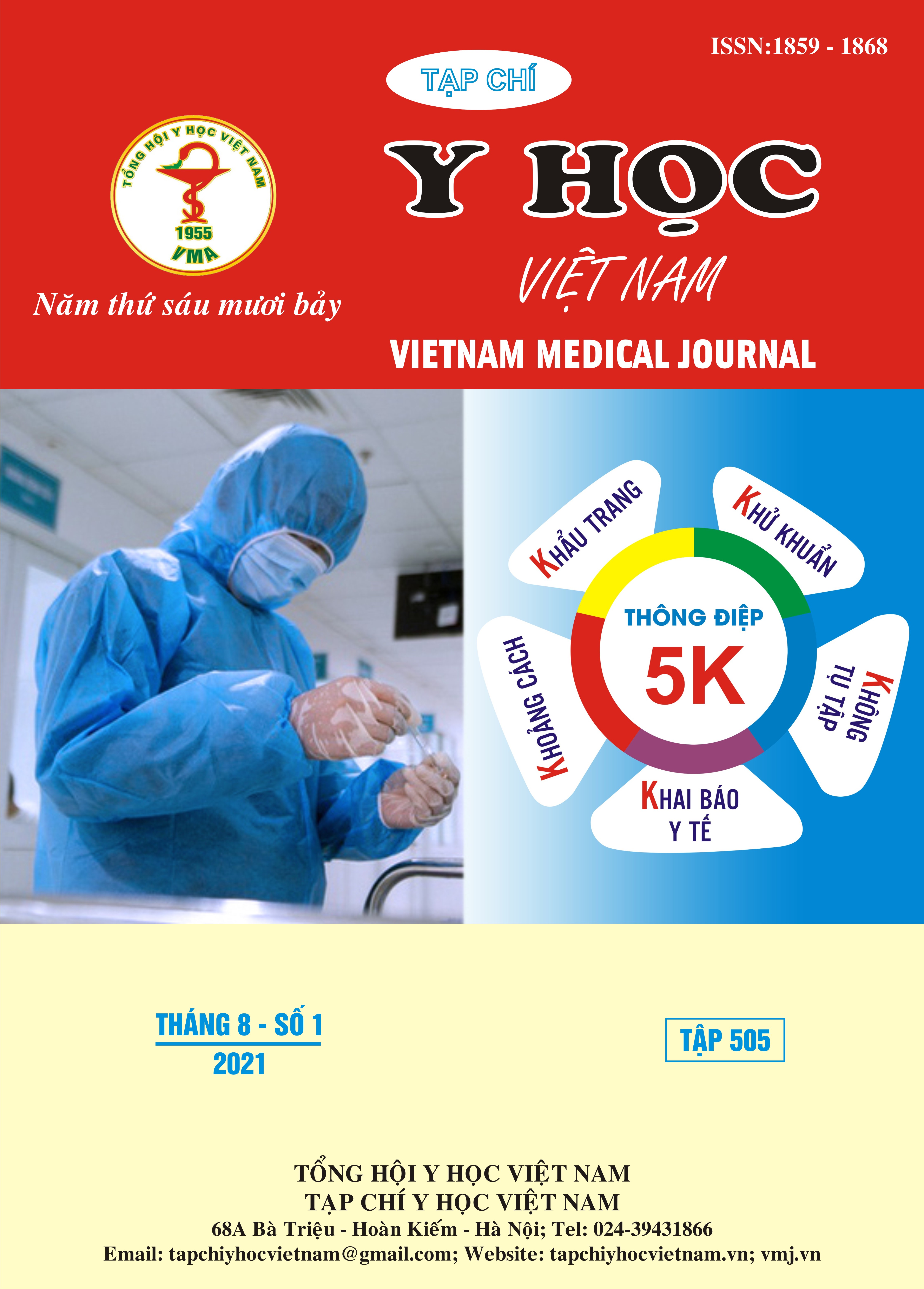THE EVALUATION OF UNILATERAL APPROACH FOR BILATERAL DECOMPRESSION OF DEGENNERATIVE LUMBAR SPINAL STENOSIS WITH TUBULAR RETRACTOR SYSTEM
Main Article Content
Abstract
Aims: To assess the results of minimally invasive surgery approach for degenerative lumbar spinal stenosis. Methods: From 03/2015 to 09/2016 the surgery was performed on 62 patients (25 men and 37 women; 32-81years; median age, 57,61 ± 9,6 years). We carried out bilateral interlaminar fenestration and unroofing for the decompression of nerve roots by using a unilateral approach. Result: Average of surgical time was 65,00±10,97 minutes for per level, 85,88 ± 18,05 minutes for two levels. Surgical results were classified by JOA score at the last follow up, 58/62 patients, average time 33,47 ± 16,89 months. Excellent: 22 (37,9%), good: 31 (53,4%), fair: 3 (5,1%), poor: 2 (3,6%). VAS back pain improved from 5,03 ± 1,24 to 0,67 ± 1,09, VAS radicular pain improved from 7,23 ± 0,98 to 0,95 ±1,42, ODI improved from 66,32 ± 5,39 to 17,47±11,77, JOA improved from 11,29 ± 1 to 24,39 ± 2,70. The increasing of spinal canal on MRI at the last follow up (35/62 patients) significant difference (p < 0,001): A-P diameter: 4,82 ± 1,65 mm (pre-op: 6,43 ± 1.34 mm; post-op: 11,25 ±1,59mmm); Dural sac cross-sectional area: 73,06 ± 18,80 mm² (pre-op:49,29 ± 15,09, post-op: 122,35 ± 25,79). Complications: dural tear were 2 (3,2%) and epidural hematoma in 01(1,6%). Conclusion: Minimally invasive surgery is safe, effective and lower rate of complication for degenerative lumbar spinal stenosis.
Article Details
Keywords
Degenerative lumbar spinal stenosis, minimally invasive surgery
References
2. Gu, Guangfei, Hailong Zhang, Shisheng He, Qingsong Fu, Xiaobing Cai, Xu Zhou, Xiaolong Shen, and Xin Gu. 2016. “A Novel Classification and Minimally Invasive Treatment of Degenerative Lumbar Spinal Stenosis” Turkish Neurosurgery 26 (2): 260–67.
3. Hwang, Sang-won, Seung-chul Rhim, and Sung-woo Roh. 2008. “Outcomes of Unilateral Approach for Bilateral Decompression of Lumbar Spinal Stenosis : Comparison between Younger and Geriatric Patients” 5 (2): 51–57.
4. Iwatsuki, Koichi, Toshiki Yoshimine, and Masanori Aoki. 2007. “Bilateral Interlaminar Fenestration and Unroofing for the Decompression of Nerve Roots by Using a Unilateral Approach in Lumbar Canal Stenosis.” Surgical Neurology 68 (5): 487–92.
5. Kerr SM, Tannuory C, White AP. 2007. “The Role of Minimally Invasive Surgery in the Lumbar Spine.” Current Orthopaedics 17: pp 183–89.
6. Lauryssen, Carl. 2010. “Technical Advances in Minimally Invasive Surgery - Direct Decompression for Lumbar Spinal Stenosis.” Spine 35 (26 Suppl): S287-93.
7. Nomura, Kazunori, and Munehito Yoshida. 2017. “Assessment of the Learning Curve for Microendoscopic Decompression Surgery for Lumbar Spinal Canal Stenosis through an Analysis of 480 Cases Involving a Single Surgeon.” Global Spine Journal 7 (1): pp 54–58..
8. Pao, Jwo Luen, Wein Chin Chen, and Po Quang Chen. 2009. “Clinical Outcomes of Microendoscopic Decompressive Laminotomy for Degenerative Lumbar Spinal Stenosis.” European Spine Journal 18 (5): pp 672–78.


